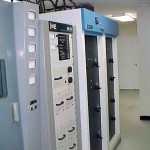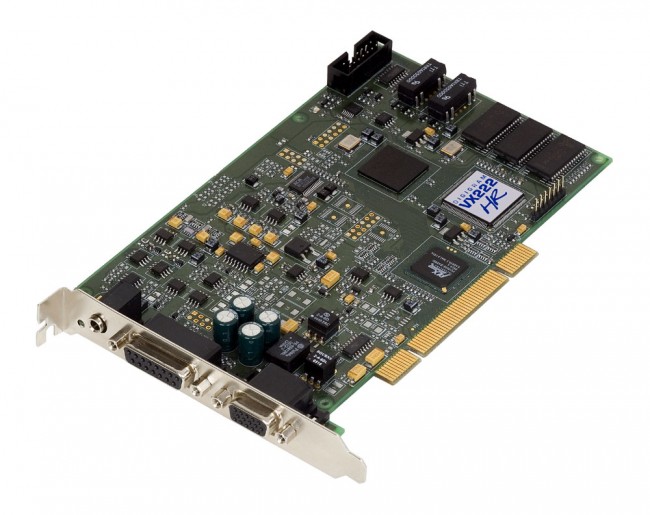If you work at a radio station that still has a local program director instead of one at the corporate programming lair (I know, sooooo old school), then you might be interested in this. I compiled a list of things that radio station program directors like:
- Good ratings. A good rating book means that they are great program directors and they really know their stuff. Bad ratings mean that engineering dropped the ball (again) when the station went off the air for 30 seconds during afternoon drive.
- Taking credit for anything good. Sort of goes with the good ratings above, but this extends out to all other aspects of a radio station, promotions, sales, news, and even engineering.
- New Processing. Any new gizmo or gadget that changes the sound of the microphone or entire station, for better or worse, is good. The more flashing lights the better. The more knobs to adjust the better. Things that can be plugged into computers and remotely controlled are the ultimate.
- More. More of anything is better, more compression, more expansion, more highs, more mid-range, more lows, more gain, more de-essing, more loudness, more power, more punch, more reverb, more crack, more more more. If they could just have a little more, the station would be number one.
- Any other new piece of equipment. Watching a program director look at a new studio is like watching a two year old open presents on Christmas morning. I know, I have a two year old. Unfortunately, the studios don’t stay new looking for long.
- Taping notes up in the studio. I have one studio where every stationary piece of equipment has a note taped to it. Mind you, the notes have nothing to do with the equipment they are covering up, they are more like general directions, phone numbers, and other miscellaneous pieces of information.
- Free stuff. Used to be called payola or plugola, now it is a free laptop, or a trip to Disney paid for by the record rep. I’ve even seen some mysterious mike processors show up (see number 3).
- Rigging up lights to alert operators. This is a great one, the studio operator does not know if the Marti (or Matrix or ISDN) is active, so they want a light to indicate there is someone there. Or a light on the phone hotline, or a light for the EAS machine, the back door, the coffee machine, the silence sensor (never mind they are in the studio, they still need a silence sensor light)
- Blaming other people when things go wrong. The program director is infallible. If something goes wrong, it is somebody else’s fault. Always. And forever. Amen.
Someone suggested that I put up the video “More, more, more” by Andrea True Connection to go along #4. Well, okay, I guess. It is not a terrible song but the video kinda suxor. From what I can tell, Andrea True is a former p0r n star that turned signer for just this one hit. Looks like it was filmed on a p0r n set too.
Feel free to add anything else that I may have forgotten. Of course, this is all in good fun. I’ll do a “stuff radio engineers like” post as soon as I figure out what that is.






Regarding comment #8, you may have spent a lot of time rigging up lights as requested, and they all work perfectly, but when one or more of them are flashing, the announcer (that they are intended for) is likely outside the back door of the building smoking and cigarette, or talking with his girlfriend, or smoking a cigarette AND talking to his girlfirend, so it’s all for naut anyway. When he finally returns to the studio, and realizes one of the stations is off the air (maybe the one he’s broadcasting on), he will, without first following instructions, call the engineer and expect an immediate response.
Regarding Comment #4 more, more, more! I once worked at a large rock station whereby the “consultants” were engaged to deterimine whether the already #1 rating could be improved. They messed with the music rotations, “this one is heavy, this one is light” you know, and then they apparently told the GM that the audio processing needed to be addressed. The GM called me into the office and tried to explained that we needed MORE density. I asked him to clarify and with his hands outstretched he said “if this hand represents the lows and this other hand is the highs, we need more of this” as he brought his hands together horizontally. So I said “more midrange”? He said no Density, MORE density !Why is this so difficult for you to grasp! So I opened the door on the optimod 8100A and pretended to make an adjustment. The next day he informed me that what I had done really helped, and if we could just get a little MORE. So I again opened the optimod and this time actually set the release time from 2 to 4 (slower and more dynamic) and turned down the inputs slightly (less compression). He came in the next day and proclaimed that the station sounded absolutely “awesome, we are just blowin doors;[whatever that means]”I told you we needed MORE compression and density; next time just listen to me the first time”. I agreed with him that it sounded better and it was never touched again.